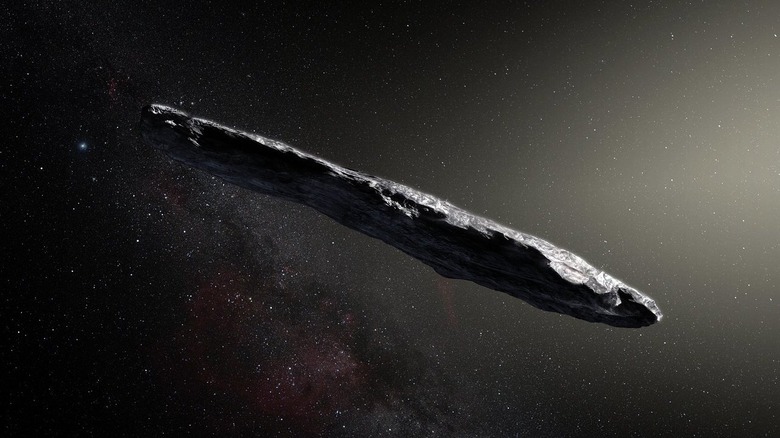The Mysterious Asteroid That Just Visited Our Solar System Looks So Weird
Last month, astronomers got a shock when they spotted what appeared to be an object from outside our Solar System cruising around the sun and heading back out into the depths of space. After combing through the data, they determined that the object was an asteroid, making it the first such interstellar visitor to be documented by mankind. Now, researchers closely studying the asteroid and its behavior have released their findings in Nature, and it paints and incredibly odd picture of what the asteroid looked like.
When you think of an asteroid you likely imagine a round-ish rock, perhaps with small peaks and valleys, but overall a spherical or oval shape tumbling through space. The interstellar visitor that zipped through our Solar System in late October looks very, very different. Oumuamua, as the rock has been named, is like a cigar, measuring some 800 meters long but only 80 meters across. Yeah, it's a real weirdo.
Oumuamua was traveling extremely fast when it entered and exited our little system, flying in and slingshotting around the Sun before scientists could even determine what exactly it was. Early reports suggested it was a comet, but further analysis determined that its lack of a haze surrounding it meant an asteroid was far more likely. What was clear from the very start was that it was moving so fast that there was no way it came from within our own Solar System, and that it must have originated elsewhere.
Where exactly it came from is still unknown, and that's a question that will likely never be answered. Tracing the origins of an interstellar object are much easier said than done, and with no obvious source of the space rock we'll be left wondering where it originated and where it's headed for eternity.
However, that's not to say scientists haven't learned an impressive amount about the oblong object itself. For one, Oumuamua is thought to be reddish in color, owing its hue to its metallic makeup. The rock is also thought to be a great deal more dense than previous estimates of interstellar objects had hinted, and researchers are now left with the task of tweaking their detection equipment in the hopes of spotting more interstellar objects in the future.
